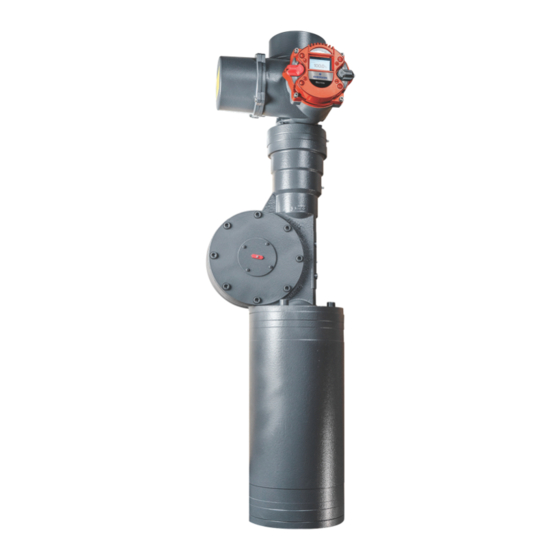Emerson Bettis RTS Panduan Pemasangan, Pengoperasian, dan Pemeliharaan - Halaman 5
Jelajahi secara online atau unduh pdf Panduan Pemasangan, Pengoperasian, dan Pemeliharaan untuk Peralatan Industri Emerson Bettis RTS. Emerson Bettis RTS 18 halaman. Extension board for modbus rtu
Juga untuk Emerson Bettis RTS: Panduan Servis (18 halaman), Panduan Pemasangan, Pengoperasian, dan Pemeliharaan (16 halaman), Panduan Pemasangan, Pengoperasian, dan Pemeliharaan (18 halaman), Panduan Pemasangan, Pengoperasian, dan Pemeliharaan (16 halaman)

Installation, Operation and Maintenance Manual
VCIOM-15590-EN Rev. 0
Section 1: General Information
The Standardized PROFIBUS DP system is available for all Bettis RTS Series of actuators.
This interface is a hardware option and should already be known when ordering the actuator.
Retrofitting is possible but should only be performed by a skilled Emerson technician or by
specially trained personnel.
PROFIBUS-DP defines the technical and functional characteristics of a serial fieldbus
system, with which a set of distributed, digital automation devices can be networked with
one another. PROFIBUS-DP distinguishes between master and slave devices and is designed
to exchange data at the field level.
This is where central control devices, such as PLCs and PCs, communicate with distributed
field devices via a fast serial connection.
Data exchange with these decentralised devices is carried out cyclically. The communication
functions necessary to do this are defined by the PROFIBUS-DP basic functions according
to EN 50170.
Master devices control the data traffic on the bus. A master can send messages without an
external request. In the PROFIBUS protocol, masters are also called active participants.
Slave devices such as BETTIS RTS actuators are peripheral devices. Typical slave devices are
input/output devices, valves, actuators and transmitters. They are not given active bus
access authorisation, i.e. they are only allowed to acknowledge received messages, or, at
the request of a master, transmit messages to it. Slaves are also called passive participants.
The master cyclically reads the input information from the slaves and cyclically writes the
output informa- tion to the slaves. In addition to this cyclic data transmission of the process
image, PROFIBUS-DP also offers powerful functions for diagnostics and commissioning
purposes. Monitoring functions on the master and slave sides monitor the data traffic.
The transmission technology is based on an RS-485 connection via a shielded twisted-pair
cable. Bettis RTS series support baud rates up to 1.5 Mbit/s.
Only cables in accordance with standard DIN 19245 and/or EN 50170-2, cable type A, may
be used for PROFIBUS-DP cabling.
Depending on the transmission speed, the following segment lengths are permitted:
Table 1.
A maximum of 32 PROFIBUS devices can be connected in one segment. If more devices are to
be connected to a PROFIBUS line, then multiple segments have to be connected by repeaters.
The bus cable has to be installed at a distance of at least 20 cm from other cables and
should be installed in a separate, conductive and earthed cable tray.
It is important to ensure that there are no potential differences between the individual
devices on the PROFIBUS.
General Information
Transmission Speed
9.6 / 19.2 / 93.75 kBd
187.5 kBd
500 kBd
1.5 MBd
Section 1: General Information
November 2021
Segment Length
1,200 m
1000 m
400 m
200 m
1
